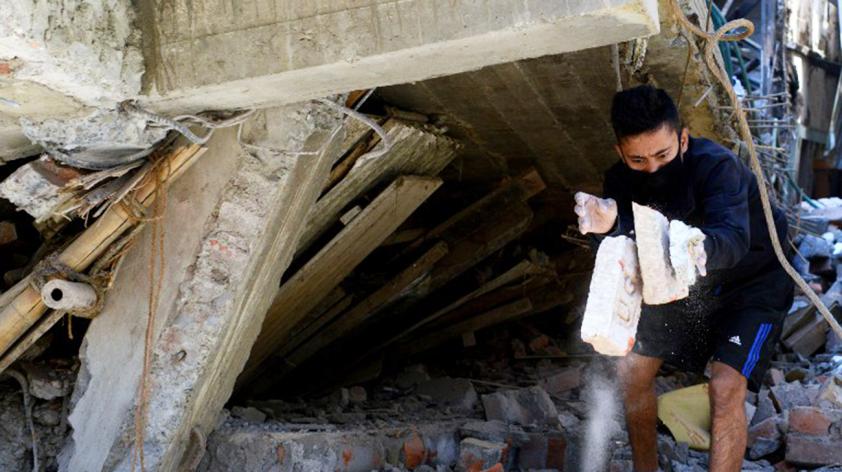Indian Union home ministry’s disaster management experts have warned of a bigger catastrophe, earthquakes with a magnitude of 8.2 or greater on the Richter scale which may hit the already ruptured Himalayan region,reports The Times of India.
They say quakes with higher intensity than the one that struck Manipur on Monday are likely to rock the region in future. The tectonic shift a series of these recent earthquakes have caused in the region — Manipur 6.7 (Jan 2016), Nepal 7.3 (May 2015) and Sikkim 6.9 (2011) — have re-ruptured the plates that had already developed cracks during previous temblors. This has led to conditions which might trigger multiple earthquakes which may go up to 8.0 in magnitude.
Speaking to TOI, NIDM director Santosh Kumar said the interconnected plates across Nepal, Bhutan, Myanmar and India pose a bigger danger, and predicted a disaster of bigger magnitude that awaits hill states and parts of Bihar, UP and even Delhi which fall under the second worst seismic Zone IV classification. The North-East and other hill states fall under severe seismic Zone V.
Though some Indian scientists have reservations, but international experts, prominently Roger Bilham, the seismologist of University of Colorado and an authority on the subject, are of the opinion that “the current conditions might trigger at least four earthquakes greater than 8.0 in magnitude. And if they delay, the strain accumulated during the centuries provokes more catastrophic mega earthquakes.”
Kumar said the Centre has taken measures to sensitise the governments of all the hill states to adopt a common building code that is different from the rest of India. The recent Itanagar deliberations on sustainable development of mountain states were part of Centre’s earthquake risk mitigation strategy to sensitise policy-makers about “the natural time bomb”.
Stress has increased in the mountains of north-east since the Nepal earthquake. Monday’s 6.7 magnitude earthquake in Manipur shows the stress has not been fully released, it has only become worse. “The collision between the Himalayan plate in the north and the Indo-Burmese plate in the east and the risk created as a result is the highest at this moment,” according to NIDM experts.
India is divided into four seismic zones. The most active Zone V comprises of the whole of north-east, parts of north Bihar, Uttarakhand, Himachal Pradesh, J&K, Gujarat and Andaman & Nicobar Islands. Delhi comes under Zone IV and is considered as one of the high-risk areas.
According to MHA’s own assessment, the regulatory mechanism in Indian cities that prominently figure on the disaster map are weak and any disaster striking in any one of these populous cities would cause huge casualties.
The UN office for disaster risk reduction (UNISDR), which considers India a valuable partner and had even acknowledged the leadership of minister of state for home Kiren Rijiju and made him a disaster risk reduction champion for Asia two months ago, has emphasised India’s need for compliance with building codes and the necessity for an “enhanced preparedness for effective response to earthquakes.”
In a post-Nepal disaster assessment, the Ministry of Home Affairs’ (MHA) National Institute of Disaster Management (NIDM) has warned of enhanced risk around the “ring of fire garlanding the entire north India especially the mountains”. This was also highlighted at a recent meeting organised by the Centre in Arunachal Pradesh’s capital Itanagar where policy-makers from 11 hill states had participated and resolved to develop a common building code for mountains.


